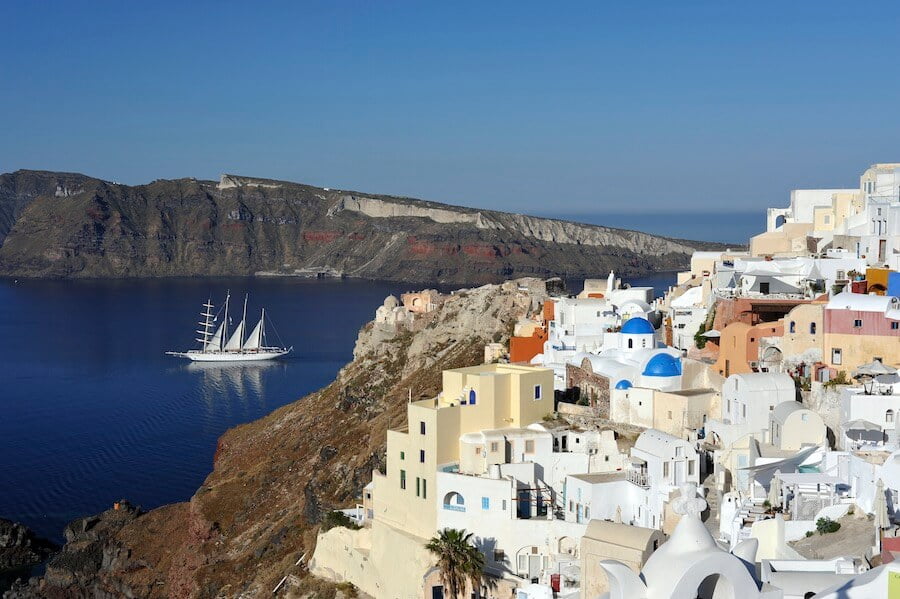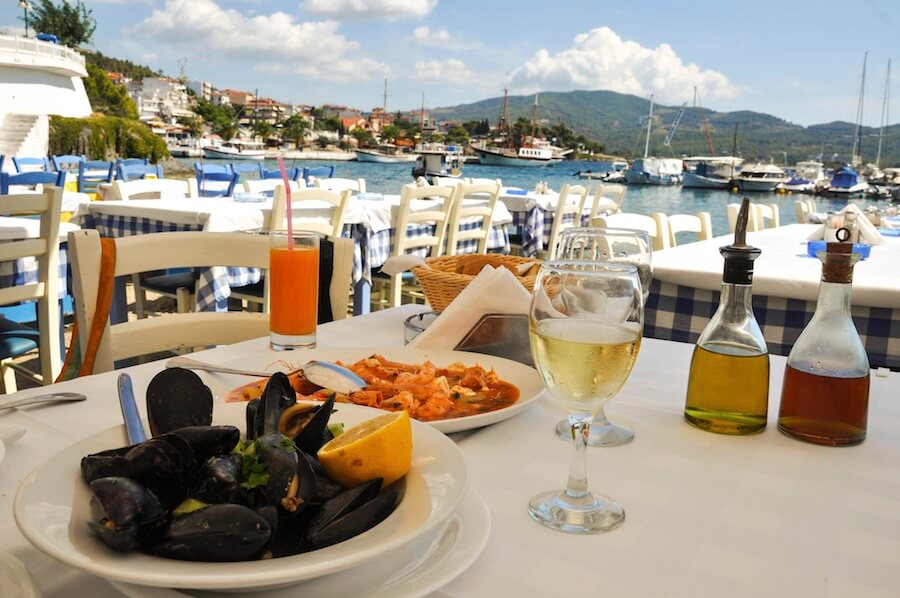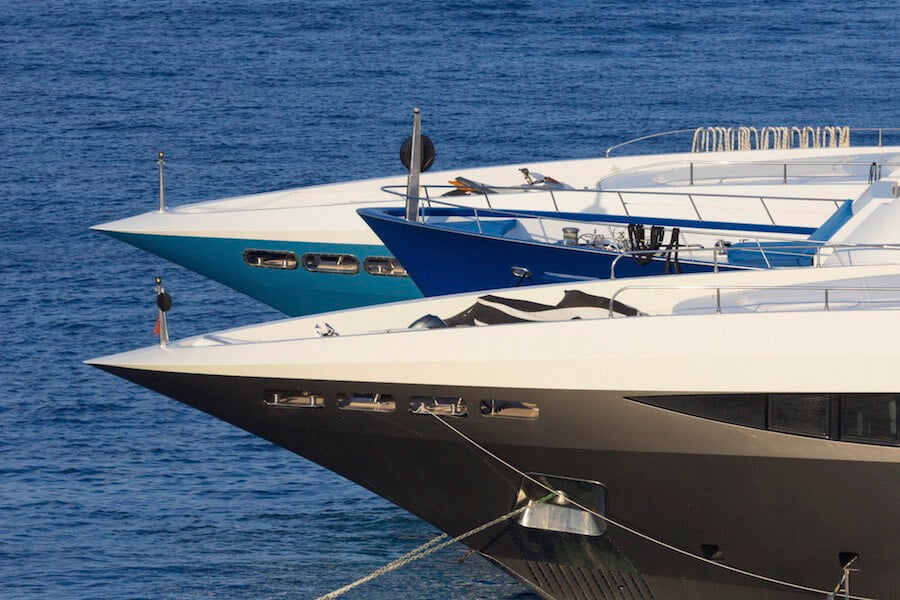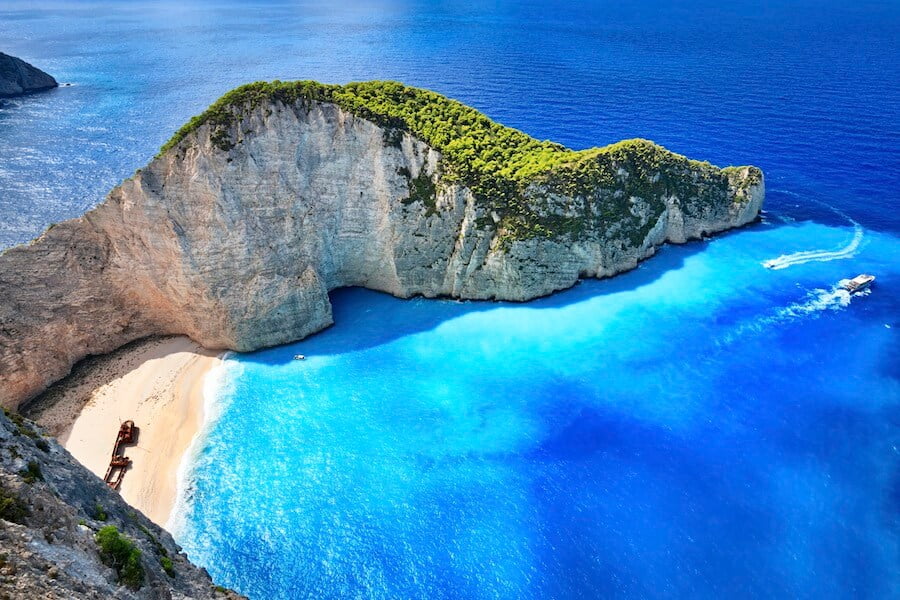Charter yachts in the Mediterranean – Croatia, Dalmatian Coast
Sailors Paradise: 1000 Islands
Croatia’s Dalmatian coast has become the darling of the Med yachting crowd for a while now. A relative newcomer to the top 5 sailing vacation destinations in the world, the yachties have now thoroughly “discovered” Croatia. Both landlubbers and boaters now flock there in droves every summer to enjoy the calm waters, great food and friendly locals.
Mediterranean catamarans, small sailboats, motor yachts, and luxury mega yachts are all available for family holidays and corporate cruising vacations. Take an incredible Mediterranean vacation on a luxury yacht and visit Dubrovnik, Zadar, Kornati, the Dalmatian coast and the, literally, over one thousand islands in the different archipelagos in the Adriatic Sea. Croatia’s majestic coast is dotted with coves, islands and villages. This is the vacation of a lifetime on your own private charter sailing or motor yacht.
The walled city of Dubrovnik is truly stunning. A famed fortress city that for centuries rivalled Venice as a major sea trading port, it remains the most perfectly preserved medieval town in the world today. Explore the fountain-filled narrow cobbled streets with small courtyard cafes, splendid squares, markets and bazaars. Visit the monasteries, museums, palaces and churches to discover Dubrovnik’s fascinating history.
The sailing area is perfect for bareboat and flotilla with short distances between islands. Completed in the 13th century, the city is said to be the most perfectly preserved medieval town in the world with the tall ramparts and towering spires remaining virtually untouched. Lined with small courtyard cafes, the narrow cobblestone streets lead to splendid squares packed with colorful markets, restaurants and bars. Historians have many fascinating museums and monasteries, palaces and churches to help bring the past to life. From our ACI Marina base the sailing is superb with many islands within easy reach.
Just 15nm northwest of Dubrovnik, Sipan – the biggest of the islands – offers undisturbed anchorages with a friendly village atmosphere at Sipan Luka, the main town. An amazing botanical garden has developed along the mainland coast between Slano and Ston where ancient seafarers brought plants from all over the world.
Sailing downriver from our Dubrovnik base, you then head north passing tiny Kolocep and Lopud to popular stops on ‘the golden island’ of Sipan. A little further north on the Peljesac Peninsula, historical Ston has an impressive defense wall with magnificent views. On the idyllic national park island of Mljet – said to be the most beautiful in the Adriatic the flotilla visits Okuklje’s small harbour on the north eastern coast and Saplunara’s sandy beach to the east – a rarity in this region.
The Croatian coastline, also called the Dalmatian Coast, is a relatively long and thin stretch of coast-line that stretches about 250 miles from the Istrian peninsula all the way South to Dubrovnik. Must see places, from North to South, include Rovinj, Pula and Rijeka (on the Istrian Peninsula) Zadar, Sibenik, Trogir and Split, all the way down to Dubrovnik at the Southern tip of Croatia.
The good news is that all these places offer the traveler or yachtsman a wide variety of local culture and dining experiences. Croatian food is for the most part absolutely delicious and healthy. The bad news is that the long coast-line and the considerable distance to Dubrovnik, makes it more suitable for a one-way charter.
Typically, a charter yacht itinerary can start in Split and go Southwards to Dubrovnik or vice versa, or if Dubrovnik is not ESSENTIAL, then you can do a Split – Split charter and limit your visits to the adjoining islands around or opposite Split like, Hvar, Solta and Vis, all of which have neat little towns and villages with great food.
Pula is situated at the southern tip of the Istrian peninsula and is the area’s largest city. Located beneath seven hills and with views of the Adriatic, Pula’s unspoiled natural surroundings are magical. Known for its mild climate and tame, beautiful sea, Pula also has a long tradition of winemaking, fishing and shipbuilding. It is also home to many ancient Roman buildings, including the well-preserved, magnificent amphitheater.
Split is the largest city on the Adriatic Coast and is an absolute seaside delight. The city has been under Roman, Venetian, Austrian, French, Italian and Yugoslav control. There is an abundance of restaurants and wine cellars.
Sites such as Diocletian’s Palace and Mausoleum, the Grgur Ninski Statue and the Cathedral and Bell Tower of St. Domnius justify its position as a UNESCO-designated World Heritage Site. The city’s coves offer several lovely beaches, including central Bacvice. Ferries link Split to Dalmatian summer resorts.
Dubrovnik has now well recovered from the war damage it suffered during the 1990s, and visitors have returned to this tranquil city. Nestled between the Adriatic and the Dinaric Alps, it’s an accessible and affordable city break for many European travelers. The pedestrian-only Old Town is especially charming.
Accessing Croatia
- Preface: Croatia’s maritime regulations only allow Croatian flagged vessels to pick-up and drop-off in Croatia. Non-Croatian flagged vessels can pick-up OR drop-off but not both. Needless to say, there is not a great selection of Croatian-flagged charter yachts, so this regulation can affect the access and the booking procedures.
- As a charter guest, you can be picked up in the separate country of Montenegro which is just south of Dubrovnik and shares an airport with that city. The marinas at Tivat and Herceg in Montenegro have excellent facilities and are improving every day.
- One way charters are a great way to see as many places as possible on one trip. You can start in Montenegro, sail up to Dubrovnik and wend your way slowly up the coast to end the charter in Split, Zadar or even Pula. (or go the other way).
- Croatia can also be accessed from Venice in Italy. Smart travelers traveling in faster vessels (motor yachts) can be picked up in Venice, and do a nice leisurely cruise all the way down to Dubrovnik.
For Foodies Only
Croatian food is simple, healthy and delicious. We have it from good sources that these are the MUST EAT – DON’T MISS dishes:
Lamb from the spit I’ve tried the lamb in Patagonia that everyone raves about but it doesn’t come near the Croatian lamb. The best spots to try it: the islands of Cres and Pag.
Pašticada This typical dish from the Dalmatian coast is hearty and great to have any time of year. What is it? A beef stew in a red wine sauce, most often accompanied with gnocchi.
Fuži with game meat An Istrian mainstay, this hand-rolled pasta can be served with a million things. Truffles are a popular topping but what I really love are fuži with venison, deer or wild boar.
Fritaja with asparagus this simple tasty dish is basically an Istrian version of an omelet, prepared with wild asparagus that’s picked in spring.
Štrukli this standard from Zagorje are basically large dumplings filled with cottage cheese and typically served with fried bread crumbs. I love to have them baked and covered with loads of sugar.
Filana paprika this dish is comfort food par excellence in my world. It’s far from fancy: green peppers filled with ground meat in a tomato sauce, served with mashed potatoes.
Brodet There are few things in life as delicious as having this Dalmatian fish stew with a side of polenta after a long day on the beach.
Kalja A downhome peasant dish, this stew features lamb and veal as well as cabbage, potato and carrots. My mom’s is the best.
Purica smlincima Another Zagorje specialty, roasted turkey with broad baked noodles known asmlinci is often served at celebrations and special occasions.
Lignje You can have your squid fried or breaded but whatever you do, make sure you order a side of boiled potatoes and blitva (swiss chard) in olive oil.
Croatia boasts more than 300 geographically defined wine districts corralled into an area roughly the size of the state of West Virginia. Croatia’s 2 primary wine regions, Primorska Hrvatska (“coastal Croatia”) and Kontinentalna Hrvatska (“continental Croatia”), are divided into a total of 12 subregions, themselves further divided into smaller vinogorje (literally, “wine hills), which spread northeast from the shore line to the sprawling floodplains of the Danube River. (It was in one of these vinogorje that the origin of California’s beloved zinfandel grape was ultimately discovered.) Wines from the Bibich and Coronica wineries are highly recommended.
Anthony Bourdain did his 8th episode on Croatia and ended it by saying: “Holy S**t, why did it take me this long to get here…??”

Sipan
The town is a pleasingly scruffy confusion of fishing boats, nets and rusty anchors, a couple of bocce pitches under palm trees, a crumbling palazzo and a few open air restaurants.

Ston
A town and harbour in southern Dalmatia, on the extreme north–west of the Ston Channel and the isthmus of the same name connecting the Peljesac Peninsula with the mainland.

Dubrovnik
The walled city of Dubrovnik is truly stunning. A famed fortress city that for centuries rivalled Venice as a major sea trading port, it remains the most perfectly preserved medieval town in the world today. Explore the fountain-filled narrow cobbled streets with small courtyard cafÈs, splendid squares, markets and bazaars. Visit the monasteries, museums, palaces and churches to discover Dubrovniks fascinating history.
Itinerary:
Day 1: Dubrovnik
Day 2: Sipan
Day 3: Ston
Day 4: Okuklje
Day 5: Free Sailing
Day 6: Sudarad
Day 7: Dubrovnik


